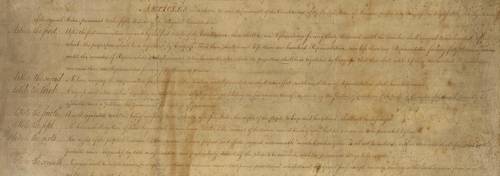President George Washington sent twelve amendments from the House and Senate to the states as the Bill of Rights on October 2, 1789. We know only ten because only ten were ratified by the states.
These are the two unratified amendments. Oddly enough, they were the first two!

The original document as approved by the Senate in September, 1789. A larger, higher-resolution image is available at Wikipedia Commons.
The Original First Two Amendments of the Twelve Amendment Bill of Rights
| Article the First | After the first enumeration required by the first Article of the Constitution, there shall be one representative for every thirty thousand, until the number shall amount to one hundred, after which, the proportion shall be so required by Congress, that there shall be not less than one hundred representatives, nor less than one Representative for every forty thousand persons, until the number of Representatives shall amount to two hundred, after which the proportion shall be regulated by Congress, that there shall be no less than two hundred Representatives, nor more than one representative for every fifty thousand persons. |
| Article the Second | No law, varying the compensation for the services of the Senators and Representatives, shall take effect, until an election of Representatives shall have intervened. |
There’s really no doubt as to why these were not passed as part of the Bill of Rights, as they have nothing to do with the rights of the people.
I have to suggest that, in addition to having nothing to do with rights, the first one may have been complicated and confusing enough to be rejected.
Concerning the second, isn’t it ironic that the representatives and senators proposed this limit on their ability to raise their own salaries, but the states rejected it!


